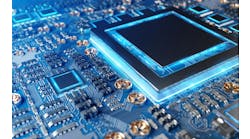A Control Design reader writes: We have some manufacturing customers that are becoming more vendor-agnostic. Occasionally, they are hunting for the best-in-class equipment choice or looking for better value on a specific piece of equipment or software. But by and large, our customers are not open to vendors they’re not familiar with or mixing technologies. As system integrators, we see value in vendor-agnostic products and machines and the growing need for open communication protocol standards. For now, we generally give customers what they want, but some in the company are encouraging us to have a more aggressive plan for steering customers away from locking into one vendor or more often considering the need for open platforms. Should we be encouraging manufacturers to move in this direction, and should that be across the board? What should our plan be for recommending components and vendor choices? We work across many types of industries and integrate many different types of machines. Is this type of vendor-agnostic practice and open communication possible across the board? Are there instances where it’s still better to stick with one vendor for all components or systems? Are open communication platforms adequate in all industries in all cases?
Answers
Support the vendor-agnostic approach, but proceed with caution
This is a wonderful question, but one that requires a multilayered response. As an end user, I see the logic behind reducing the number of vendors. Fewer vendors reduces the number of spare parts on the maintenance shelves and lowers the cost of training production and maintenance personnel on the use and replacement of those parts.
When end users reduce vendors, we usually see two vendors per type of item as a rule of thumb. This seems to be the direction that a lot of end users are going.
For an original equipment manufacturer (OEM) or integrator, they experience many of the same benefits regarding training and awareness of multiple platforms. It does make sense for an integrator or OEM to know more than two platforms but doesn’t necessarily make sense to know more than say four or five.
In terms of supply chain, the vendor-agnostic approach makes 100% sense. But it does not benefit in-house know-how. For in-house know-how to be at peak performance, the organization must specialize on fewer parts and platforms. So, you see this is a complicated question and equation depending on the type of organization you belong to.
Where this gets very interesting is with the development and growing industry acceptance of open networking or point-to-point standards. Here are the trending open technologies that are having current impact:
- the standardization of cables to three-, four-, or five-pin M12 or M8 cables for end-point devices such as proximity switches and inductive sensors, switches, cameras, grippers
- IO-Link as a standard low to medium update speed end-point connection technology
- a reduction in major worldwide fieldbuses, as the 1990s fieldbus war comes to a relative plateau—Profinet, EtherCAT, EtherNet/IP, CC-Link—I do see this getting a little crazier with the safety protocols
- PLCopen function blocks being accepted on CoDeSys controllers and now standard major brand controllers, such as Siemens and Rockwell Automation
- robot operating systems (ROSs) and other open operating systems, including some Linux builds being introduced into the industrial space
- increase in the number of open-ware/freeware support software and code-sharing via GitHub and Reddit
- increase in available online and free technical support, rather than paid subscription models.
If things continue to get more open, more common and more compatible, then the vendor-agnostic approach starts to make more sense. The idea that one could develop some code and connect to any programmable logic controller (PLC) for any drive with any connected sensors makes supply much easier while not overcomplicating the integration, training and maintenance side of things.
In 10 years, I would like to see more end users, OEMs and integrators approach a fully vendor-agnostic supply and integration chain; however, some major players are not getting onboard and preventing this success sooner. We see this in some of the market leaders and in the safety fieldbus network suppliers.
Depending on their overall mix of industries, I encourage customers to move into the agnostic technology direction cautiously, but they would have to acknowledge that arriving at a vendor-agnostic environment is a journey. We will not be there for some time, and anyone that is very heavily into one foot-dragging market leader or another may have to be willing to move away from this leader entirely to adopt this model.
I also see impediments to the journey if the organization is supporting customers that have copy-exact standards, are involved in the pharma industry or do not have support down to the production and maintenance levels.
Colin Greatwood, mechatronic technology engineer / Festo
Multi-vendor secure, reliable interoperability
Manufacturing customers should stay away from being locked into a single vendor. On the consumer front, you're always looking to purchase best-in-class equipment or what I usually call best of breed, with the choices you make buying products and having solutions that meet and exceed your requirements for the past, present and future.
Why should it be any different in manufacturing?
Manufacturing customers are looking to avoid taking risks and prefer to choose a vendor they're familiar with. Manufacturing customers are also looking for what other people do with other vendors, which is why success stories are becoming so popular at many industry events. No one wants to be the first on the block to try a specific product. For example, if you think about the automotive industry, you never want to buy a new model the first year it comes out. You want to ensure they've got all the bugs out of it before you invest your hard-earned money purchasing an unknown vehicle.
Since the mid-1990s, people have considered open standards and the value of industrial standards for industrial networking and beyond. We must continue encouraging manufacturers to adopt open standards, specifically open communication protocol standards.
The value proposition of open standards allows multiple vendors to have multi-vendor secure, reliable interoperability. This digital transformation relies on the convergence of information technology (IT) and operational technology (OT) and taking advantage of these open standards.
All the major automation players are actively engaged and moving in this direction. Still, we must ensure that manufacturers embrace the latest standards to achieve digital transformation and multi-vendor interoperability.
When manufacturers support all the different open standards, it lowers the risk for manufacturing customers because they can pick the best products that meet and exceed their needs for the specific application. All major standards organizations recognize that success is measured by the level of adoption of their respective industry standards and the importance of developing standards worth more than the paper they are printed on.
Manufacturing standards supporting these rich data and information models are the key to future building on top of the industrial networking platforms. They allow seamless integration and interoperability that is vendor-independent. Organizations like the OPC Foundation are building what's known as companion specifications for these information models and working with other information model organizations like VDMA and CESMII.
The time has come for manufacturers to support these complex data models, allowing all the devices to be differentiated only on the functionality they provide beyond the standardized data and information models.
The complete lifecycle for manufacturing customers depends on these industry standards and the rich information models being implemented by manufacturing suppliers. We must continue to work proactively with manufacturing customers who are driving the manufacturing suppliers to support the industrial Ethernet communications standards, as well as the data and information models of the respective industry trade associations.
A standard information model that is identical across all devices of a particular class virtually guarantees lifecycle interoperability.
Manufacturing customers should work with system integrators and distributors to use the components from vendors committed to open standards, specifically the industrial network organizations and the respective data and information model standards organizations. Many end users, including those in the pharmaceutical, oil and gas and chemical industries, have recognized the importance of standardized data models and working with vendors that natively support open standards.
Manufacturing customers should not depend on getting locked into customized solutions that will be here today and gone tomorrow. Many industrial Ethernet organizations have been around for more than 25 years and have built a rich portfolio of suppliers making products based on their technology. We keep enhancing the technology of industrial Ethernet organizations. Still, the most essential part of embracing and adopting the technology is how the industrial Ethernet organization maintains backward compatibility with an eye to the future. It's not a matter of if. It's a matter of when the digital transformation for a manufacturing customer can be realized.
Picking vendors and components committed to open standards is the key to successfully automating your facility. It ensures your older, newer and future products will be supported. OPC UA is a leading-edge industrial organization focused on developing an architecture embracing IT-OT convergence. At the same time, it supports the various information models, allowing plug-and-play interoperability across disparate networks and devices.
Industries are recognizing the importance of and finding success by integrating many different types of devices into their architectures and supporting a philosophy of vendor independence with open communication networks.
Custom-baked solutions are a thing of the past. Suppose you want to be able to pick best-in-class or best-in-breed components to build completely interoperable automated solutions. In that case, you must choose vendors that truly embrace open standards and, specifically, the industrial network standards that have proven successful. Manufacturing customers must drive manufacturing to support building the products and supporting interoperability with other vendors by leveraging all of the industry standards that are being developed.
The only reason to ever do this is if you never plan to work out of the box and you ever want to integrate other best-of-breed type devices and applications into your architecture.
There are points in time where sometimes there are legacy devices that you might have in your manufacturing facility that won't be compatible with new and upcoming devices. Even in those cases, you can find custom solution providers and system integrators to help you bridge those legacy devices into open networks to acquire data for your control systems.
Open communication platforms have existed for quite a while. They are more than adequate for all industries to provide complete connectivity and integration. It won't guarantee interoperability between different open communication platforms, but they can coexist on the same physical wire, which is a step in the right direction.
We have been discussing other open communication platforms and how they continue to evolve their technology, supporting innovations that improve performance reliability, security and overall integration capability. One of the latest technologies, time-sensitive networking (TSN), has been supported by many industrial Ethernet organizations for the past few years. It allows for the coexistence of different open communication protocols on the same physical wire, allowing IT-OT convergence and, simultaneously, to do both control and configuration applications simultaneously, without disruption to your control operations.
Tom Burke, global strategic advisor / CC-Link Partner Association (CLPA)
Interoperability nirvana
If the past two years have taught us anything, it’s that dependence on single platforms can be a risk in the event of a global supply crisis. While the desire for "best in class" will always exist, some platforms are more difficult to adapt to turbulent conditions.
Internal redesigns of components or realignment of key projects may require flexibility that may not be possible. System integrators should make it their primary value to offer the best solution for the project at hand. They are the experts in the eyes of their customers and are in a unique position to steer standards to meet time requirements.
Open architecture platforms offer the possibility to accomplish these tasks without deviating from the core communication standards of the project. Here, interoperability is the ability of systems, applications or components to work together while exchanging information. Some advantages of this approach are:
- Systems can operate more efficiently. Interoperability is allowing data and information to flow between various systems. This reduces manual intervention, lowers the error rate and, as a by-product, streamlines operations.
- By using interoperability, you will achieve long-term cost savings. Custom solutions are no longer needed as you continue to use standard protocols with standard interfaces. This reduces the time it takes to connect different systems and start exchanging data.
- Interoperability provides the ability to be flexible in the selection of components and make changes if there are problems with a component. You can adopt new, evolving technologies in a timely manner, which promotes scalability.
- Interoperability is powerful in that you become vendor-neutral. This allows you to accept the specifications of any customer. It also allows you to avoid pricing issues that arise from being tied to a particular vendor. Perhaps most importantly, it allows the system integrator to choose the solutions that best suit their needs and switch when there is a better solution.
- Interoperability encourages collaboration not only within the integrator’s organization, but also with other companies. Different companies can utilize specialized tools to exchange information.
- When using interoperable systems, you are better able to adapt to technological changes, regulations and new business requirements. This future-proofing can save your company the need to overhaul systems.
So, interoperability is nirvana? These are indeed powerful incentives, but achieving them requires careful planning, adherence to standards and collaboration between many different stakeholders. The benefits far outweigh the challenges, making interoperability an excellent choice for today’s system integrator.
Perry Hudson, market manager, packaging / Pepperl+Fuchs





